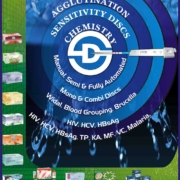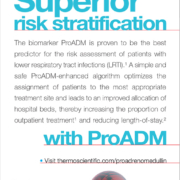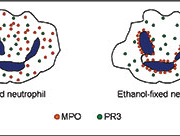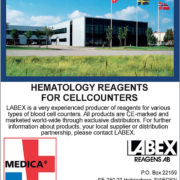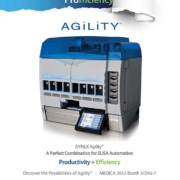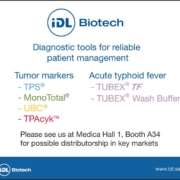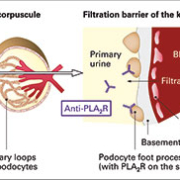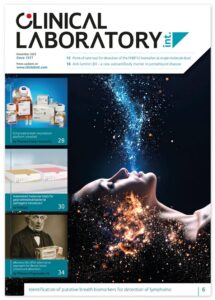Quality control: the emergence of risk-based analysis
One of the fastest-paced developments in clinical laboratories has been in the area of quality control (QC) systems. Its driver has been the increase in the performance and sophistication of QC software, which has progressively tightened benchmarks for acceptable standards. On the plus side, improved QC systems clearly help a laboratory to serve the needs of patients more efficiently. Less clear is the latest, paradigm-shifting QC guideline known as EP-23; it is so far restricted to the US (where it originates), but is likely to have a major impact on Europe.
Quality control in a lab concerns routine operational and technical activities to verify that a particular test is conducted correctly. The main aim of QC software has been to ensure the validity of both test methodology and results, to define and set acceptable SDs (standard deviations), and to correct errors if they occur (ideally before they do so), or flag them as such.
There is a wide variety of software for laboratory QC. Market leaders such as Westgard and Bio-Rad supply end-to-end solutions. Other vendors provide application specific software, for example Hematronix’s Real-Time and Quantimetrix’s Quantrol Online for monitoring performance against peers, Boston Biomedica’s AccuChart for infectious disease testing, etc.
Staff challenges
The capability of the staff who run laboratory tests is a major issue, but this has long been attended to – in terms of accreditation of study programmes and training courses as well as requirements for continuing education to stay abreast of developments in the field. In the US, the Clinical Laboratory Improvement Amendments Act (1988) legally ensures that laboratory staff have to be up to the mark.
On the other hand, staffing has recently begun posing another set of problems. This is because many laboratory personnel who ushered in the IT era have begun to retire. In spite of high levels of unemployment, finding an adequately qualified pool of new recruits is proving to be a major problem in the US. [1]
As with any other core systems software, QC has been in perpetual evolution – a result of ever-changing regulations and market forces. Even the most intuitive and adaptive software requires people, experienced people, to tweak and adapt the programs in order to get them to work well and deliver the best results within a particular environment. QC is no exception.
The need for qualified personnel is set to increase dramatically as US laboratories shift away from the current system of equivalent QC to risk-based analysis, which is based on a more scientifically rigorous methodology. The US has decided to completely abandon equivalent QC in favour of a new risk-based analysis system, known as EP-23.
Equivalent versus risk-based QC
Standard operating procedures (and inbuilt IT system capabilities) for equivalent QC usually entailed running controls just once a month. In case of an aberration, the entire month load of patients (or over 8% of the annual total) needed to be recalled, samples retaken and tests rerun. Scheduling the re-tests alongside a current batch almost invariably led to capacity bottlenecks, which could then spill over into the subsequent months. Risk-based analysis is meant to do away with such contingencies.
Nevertheless, risk-based analysis also means more complex software, and more human intervention. It requires identifying potential error sources in a test or device, and implementing (external or ‘wet’) controls to reduce the risk. Meanwhile, the pathways to implement EP-23 remain somewhat nebulous. Proponents of risk-based analysis, on their part, acknowledge its complexity, but argue that the costs of error in equivalent QC far outweigh the latter, not only in terms of re-running tests but in case of wrong diagnosis.
EP-23 will drive need for skilled lab staff
Clearly, EP-23 will rely heavily on experienced laboratory personnel. The Clinical and Laboratory Standards Institute (CLSI), the US professional society mandated with establishing EP-23, notes: [2]
“The decision of how the laboratory performs its risk assessment to develop a quality control plan (QCP) will be up to the laboratory director. Some tests analysed on the same analyser may have risks of error so similar that they can be grouped on the same QCP, with only minor additions or deletions for individual tests, while other tests on the same analyser may have significantly greater, or lesser, risks and need a completely different approach to a QCP.” It also acknowledges that there “is no specific format that is required for the presentation of a QCP.”
In an official presentation on EP-23 by the Centers for Disease Control, [3] CLSI goes on to add: “Labs will receive guidance to enable them to develop effective, cost-efficient QC protocols that will ensure appropriate application of local regulatory requirements based on the technologies selected by the lab and reflective of the lab’s unique environmental aspects. Labs will receive guidance to develop QC processes and procedures to reduce negative impact of test system’s limitation, while considering laboratory environmental/operator factors like personnel competency, temperature, storage conditions, clinical use of test results, etc.”
In such a scenario, a looming shortage of qualified personnel would hardly help.
Large laboratories clearly have an edge in being ready for a shift to EP-23, since they can afford to recruit specialist consultants to manage the changeover. For their smaller counterparts, the outlook is likely to be very different.
Europe and EP-23
The impact of EP-23 on Europe remains to be seen. At present, the EU has made no official comment, in spite of the inevitable issues which could arise, for example within the framework of the International Conference for Harmonization (ICH).
Part of the reason for its nonchalance may simply lie in the fact that there is no similar European laboratory QC standard, like EP-23. Indeed, several EU countries have their own national systems covering QC in laboratories – for example Belgium’s Directive pratique pour la mise en place d’un système qualité dans les laboratoires agréés dans le cadre de l’INAMI, France’s Guide de bonne exécution des analyses de biologie clinique, and Britain’s CPA Manual for Laboratory Accreditation.
On its part, European standard EN 45001, currently recommended for laboratories, is far broader in scope than EP-23. It covers not only QC but technical competence, human resources, organizational structure, document management and much more. It is also based on the international ISO Guide 25. ISO 25 is currently under revision, and is due to replace EN 45001.
US proponents for globalizing EP-23 note that its inspiration too lies in the accepted ISO standard, 14971. Between the sweeping generalities of EN 45001 and the different national systems in place for lab QC, it may be hard to argue that EP-23 could be a good path forward for Europe too.
References
1. http://www.healthcareitnews.com/
news/lab-staff-shortages-call-better-point-care-diagnostics
2. http://www.clsi.org/Content/NavigationMenu/Education/EP23QA/EP23_Q_A.htm
3. http://wwwn.cdc.gov/cliac/pdf/Addenda/cliac0908/Addendum%20N.pdf



